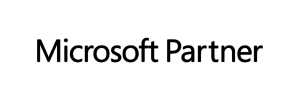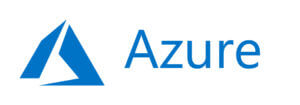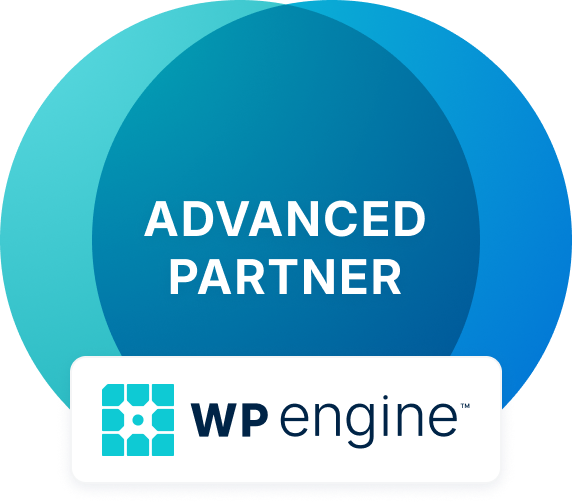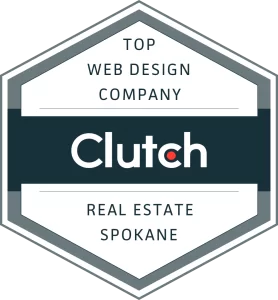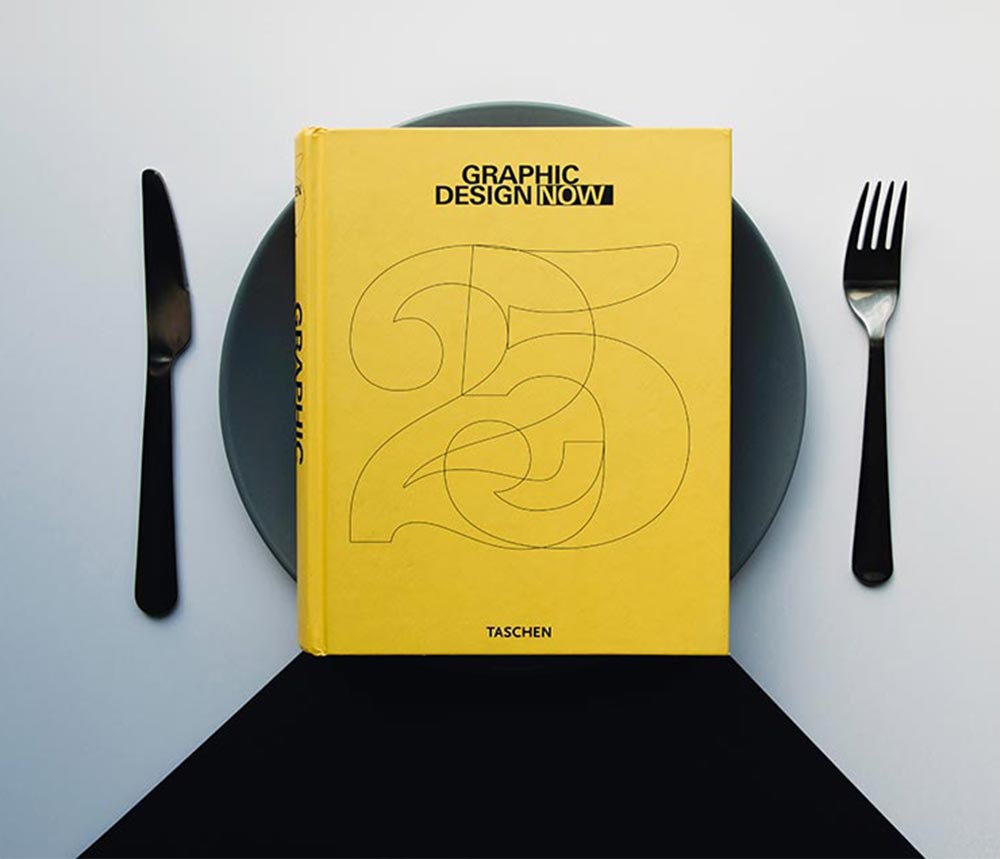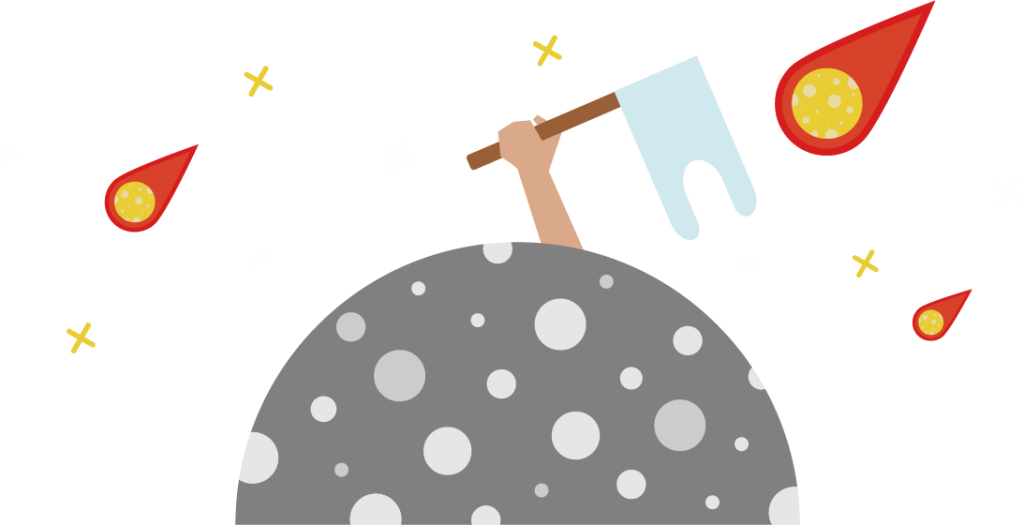Adam Jones 0:00
I do always want to thank sweda for hosting and sponsoring these types of events, and sending it out throughout the counties, we are just always so excited to work with sweda. They are a wonderful organization that serves the community in such a powerful way. Without further ado, we will get going today on branding, awareness, sales, and how to do each of those. The first thing that we really do like to focus in on is that you are not your brand, I see this mistake really, really quite often. There’s a lot of companies that believe that, you know, if I am the sole proprietor or if I am the single owner, LLC, that, when I say goes that this is my brand that the brand is me. And that can be true in some instances, but to create and scale, and to be mindful of how you’re perceived by the communities and your customers, and even your employees as you grow into those places. That really radically changes. And so then we kind of have to get out of sight of ourselves. So with that, I’ll hand it over to Alyssa.
Alyssa Mullins 1:19
Yeah, so let’s just go over what is branding really quick. Branding is going to be the result that end result, that gut feeling that a person gets from when they walk into your business or when they meet you even. And that gut feeling that they get right there from when they walk in to when they leave to after you know, they think about it two or three days later. It’s the overall perception that a person has of your brand as well. So my perception of like, Starbucks is going to be different from you know, someone else. And that’s, that’s kind of what their branding is. That’s what that communicates to me and what it communicates to you. And moving forward. Branding is not a lot of things that you think it would be, it’s not your logo, it’s not going to be the product, and it’s not going to be your promise. And that can be a little disorienting, because when you think of different brands, different businesses, you think of their logo, you know, I said Starbucks, and you’ve probably got that like image of their logo, that green think it’s a mermaid or girl popping up into your brain. And that’s part of their brand, but that’s not their brand. And so to kind of explain a bit, the logo is going to be the symbol, that’s going to be the icon, that’s going to be what people see and are recognized and recognize when encountering your brand, right. And it’s not your product, because that’s going to be what your business what your company gives out to people, whether it’s like coffee beans, or if it’s you know, some kind of clothing, apparel, that’s going to be the product that your brand has to help communicate that end result that you want that person to feel. And it’s also not the promise that sets the promises, what sets an expectation for your company. So you know, you promised to, you know, do well or have maybe some of the best quality coffee beans or finest like clothing out there for you know, your customers, your clients. And that that’s the promise that you have. And the promise helps enhance that end result feeling your overall brand. And some examples that we have after I’ve already talked about Starbucks and clothes would be we have subway here subway, you hear their like slogan, eat fresh. And if you’ve gone into a few different subways, you know, the one here in Pullman, the one in Colfax and maybe even one like somewhere like just random, you know, they’re fairly consistent. You walk in, you get a greeting, K What can I get for you? And then the order you pick out your bread and then you go and you give them the sandwich that you want and it’s all very consistent and how your entire experience is from the subway here to the subway over in maybe New York, I don’t know. And, and that their brand and everything will appeal to the customers who want to feel like their eating belt better and healthier. As opposed to McDonald’s. Which I love their French fries and they also promote happiness and for me french fries bring me happiness. So it works. But you know those golden arches, you know that that’s when a McDonald’s is close by, because you’re driving, or maybe you’re walking and you see just these big golden arches just out there in the distance, you’re like, oh, there’s a McDonald’s. And maybe there are some good childhood memories associated with it, or even current memories where you see it and you get like a little happy feeling inside. And their kids meal is like a happy meal. They strive to promote that happiness. And if you’re like me, and you go through the drive thru, a bit more than you’d like to admit, you, actually, and as much as maybe you may not like it, when after you get your order, they say, See you next time. And it’s consistent, especially in the Pullman one. And they say it every time. And maybe if you don’t like hearing it, or maybe you love it, it’s something that sticks. And it’s that consistency of them, promoting happiness and all that they do. And even in the See you next time as you’re trying to drive away before they can even say it to you that consistency is what enhances that result feeling in their branding.
Another example that I have is the caveat Coffee Company. They’re local, and they’re proud, and they say it everywhere. And when you read up about them, you can tell that they love what they do, it shows something I saw on their website was or they say they want to inspire each of us to drink differently. And there’s a level of education that comes with it. They help educate you on how to brew your coffee in different areas. So it’s not just like, you walk into, you know, normal coffee store, you can order their beans, and learn actually how to get the best value and quality of coffee from their product, because they also walk you through it and that there’s that love for what they do. And that feeling helps enhance what their brand is. But those are just some examples that I had, if that helps communicate that.
Adam Jones 7:18
Yeah, and it’s, sometimes it’s hard for us to see these items or these elements from our customers eyes or our customers point of view. You know, sometimes we don’t only need to try and see it from our customers eyes, we need to see it from their pair of shoes, but not even just their pair of shoes, but their size 10. You know, the experience if you go into certain parking lots, right, even trying to take even that minutiae of a detail. I might always drive a truck. And never realize that the person who has the Honda Accord or a lower sitting vehicle scrapes the underside of their vehicle every time they go into your parking lot. And that will actually deter business. Now, every time they associate come into your business with scraping their car, and that might not be something you can control. That’s something that we can be cognizant of something we can be aware of, of every element of the customer experience from the entrance of the parking lot to maybe it is a click online to leaving. What do each of those things look like? And the parking lot does. It’s really easy to ask what in the parking lot speaks to the brand? Are the right colors on the walls? Do you have the right imagery on the windows on the doors? Is your open sign actually even on? There are businesses either locally where the sign is either on when it’s not supposed to be or it’s off when it’s supposed to be on? And so it there’s a lot of a level of inconsistency that can make a has kind of a weird thing to say there’s that level of anxiety that kind of builds up of is this present or is it not? If I go the website, is it consistent? For me to understand that yes, I am going to have a safe secure ordering experience and is going to be shipped to me in a manner of which I am expecting. Eg is it ups versus USPS. Now is there we’re getting towards the holiday season. Are we going to be able to hit and make those deadlines? Is there a notice? Right that says that, hey, we need your order. And by the 10th of December to make sure that we hit by Christmas. Those are the types of things that we do have to be mindful of. And the moment that we enter into a store or a place or maybe you’re bringing equipment into a home if you’re a service provider. What what is in that experience? What What’s the smell? You know, what are the visuals? What’s the sound? And music is like the easy one. I know everyone has their their Christmas playlist from either Spotify or Sirius XM or whoever you’re playing right now. And although it might be rough for the retailer to hear the same Christmas songs for eight hours a day for the next two months, your customer loves it. Even if they’re only there for five minutes, it’s about the experience. It’s about how are you communicating a positive experience to that individual? Just like Alyssa was saying? What’s the greeting? Right? How are you greeting someone? Is it something that is particular to you to your company, to your brand to how you address your customers? Right? You know, is it just Hello, how can I help? Or is it Have you heard about our latest promotion. And a really good good example of this is board games board games have had kind of like a huge renaissance in the last decade, it’s been incredible. And one of the kind of a sales technique that has worked for a lot of them is able to set up a rental program so that you can rent a board game because board games are anywhere from 40 6080, even over $100. In some cases, they’ll set up so that you can rent the board game. And if you like the board game, the cost of your rental goes towards the cost of purchase, which is kind of like an easy, small investment to test and play test and see if Oh yeah, my family will actually play this on routine basis, or, Oh, my goodness, this was horrible. I am glad I did not pay $60. And so even just in a rental program, that speaks volumes to the experience of the user, that speaks volumes to the customer who is worried about spending that kind of money, especially if they’re not sure to like it. One thing they noticed was that there was a stark difference in board game stores that would engage the customer at the get go versus those who had not. And that’s as simple as, hey, welcome in today. Have you heard about our board game board game rental program?
No, no, I haven’t told me about it. And it’s that simple. Right? The board game companies and shops that kind of failed in the rental programs. The difference was in the greeting. One greeting versus no greeting. It was a very stark difference in statistics and how things were run, how things are approached. And it’s just something that, you know, have we trained our employees to have those appropriate gradients? Have we trained them to have that spark of joy to engage the customer in a way that would be fun and delightful. And I really like that word delight. You know, what are ways that you can delight your customer from start to finish that reflect your brand? Even after purchase, right? Like I bought the thing I get it home? Is there anything in the bag? Or is there anything in the other stickers are there, cards are there, there’s all kinds of things that we can do to help spark joy. Instead of instigating what we call post decision, dissonance. And post decision dissonance is when you get home and it’s kind of like buyer’s remorse. But you’re trying to talk yourself into Oh, yeah, this was a good purchase. Bobby was a good purchase. Linda was that a good purchase helped me like this was good, right? And so we’ll either try and talk ourselves into believing that it was a good purchase. Or we’ll ask others to validate whether or not it was a good purchase. Yet we there are simple things we can do to help spark joy in the brand. And the experience in that reputation that’s left and get rid of post decision dissonance to encourage further purchases.
Alyssa Mullins 14:15
Some examples of that would be something like a thank you note, you know, a lot of especially smaller businesses that I’ve seen, what they’ll do is when they’re sending out their product, they’ll kind of be like, uh, thank you so much for ordering from my tiny shop. And like, is that thank you not personalized? Did they write the name of the person who made the order? Or if it was a gift we do, do they say like, Hey, like, do you want to leave like a little gift note to the person that you’re giving it to? Like, oh, you know, here’s a little gift for you. And those little things can help make a difference because when you get your product you just think oh, okay, I’m gonna get my new you know, my New shirt or, you know, this little thing for my, my brother, my niece or nephew in the mail and then I’m just gonna wrap it up and send it to them. But it’s part of that experience. And along with thank you notes, did you get little bits of merch? Did they throw in a couple of stickers that kind of like help reflect their brand a little bit. And did they say like, Oh, these are just some stickers for you. Or there’s a little like she does like handmade jewelry. And what she’ll do is sometimes with an order, if she has extra stuff that’s a little not like older, but you know, stuff that’s kind of been sitting for a little bit, and she’s like, Oh, well, here’s a little extra gift for you just take it, you know, and those little things make a difference. Especially merch because it helps. It’s a little something for you, but then you also get their brand out there. And that’s a nice way to help promote yourself in a way that also delights your customer and keeps them coming back. And then an example is another example is the customer experience. You know, Adam was talking about just getting into the parking lot and what that’s like for a person who drives you know, a truck or maybe add a little car. And those differences, like an egg can influence how a person feels from when they walk into the store. And an example that I have for that. It was I was coming back to Pullman. I’m from the west side. And I wanted to go get a Boba because why not? And, and I had gone with I had gone and I walked in, and it was a small shop. Like they were very new. And I walked in, it was really cute. You know, there was like neon signs of their logo and everything like that. I was like, oh, it’s cute. But I never been there. And so I was like, I don’t know what to get. Because it’s usually hit or miss with places like that. It could be really cute, but the quality could be, or it could be really amazing. And you just found this little hole in the wall. And from when we walked in, we were greeted with like a hey, we’ll be right with you guys. You know, we’re just gonna finish up these orders, and I’ll be right with you. Okay, cool. And then we got helped. And the guy was like, Oh, are you guys new here? And we’re like, Yeah, I haven’t been here before. And he went and gave just a little insight to everything that they do, like, oh, all of our teas are going to be looseleaf. Like, we don’t use any of the powders or this or that. And then I couldn’t decide on a drink because I’m very indecisive about a lot of things. Especially where to eat and what to drink. But you know, and I was like, Okay, what from your seasonal drinks? Do you like? He was like, Oh, well, have you had they’re like, it’s like a pumpkin cheesecake? Something. Something? I was like, that sounds good. Okay, I’ll try it. I trust you. I’ll try it. Okay, well, do you want the graham cracker topping on with that?
Sure. And then do you want the toasted marshmallow to? Like, how are you going to put a toasted marshmallow in my? Okay. He’s, uh, yeah, so what they do is they like, get a little torch and they like, form bait a little bit, and then they stick into your drink. I’m like, oh, so there’s gonna be a marshmallow on fire in my cup. Cool. Then this other guy makes my drink comes out with it. And from start to finish he walked me through. He’s like, Yeah, so you know, we make our pumpkin jam and house and he’s like torching the marshmallow. And that whole experience makes me want to go back again, the next time I’m on the west side, even if it’s out of the way, I will find a way to get there. And I even bought a sticker from them because it was cute. But also because that experience was so good. Like, I want to go back again. And it’s five hours west of me, and I want to go back as much as I can. And so it’s those little things, those little differences that keep people coming back from how you interact with them in store, to how they receive your product, or even just how they interact with you and everything around them. But those are some examples.
Adam Jones 19:18
Yeah, I want one thing I do want you to reiterate to is as you’re talking about that experience, you know, you said Hey, you came in. The guy said, hey, we’ll be right with you. A news said, Hey, what do you like, I trust you. Right, and that’s a snap snap decision that happened, you entered you had maybe 2015 seconds, 20 seconds of interaction. And there’s immediately trust built to help continue to build that experience. Like that, that is the types of things that we need to be looking forward to. And that’s the other thing is when we develop a brand or we develop this experience this reputation This feeling that’s associated with a brand, are willing to go out of our ways to buy to visit to engage with the brand. That’s the power of developing your brand out. And I’m a bottom line guy like I, I used to do so my t work I’m very kind numbers, statistics driven. We don’t do things that we don’t believe in. And we would never recommend things that we don’t believe in. In 1980, like, am I my auntie like Sears and Roebuck like I love Sears Roebuck, I have a great affinity towards that their company was evaluated based on their solid, tangible assets, how many chairs how many shirts, how many garage door openers, I actually still have a Sears and Roebuck garage door opener, it still runs, it’s awesome, I love it. That’s the way a company was evaluated in the 1980s. That really changed. As we got into this digital age, in 2010, tangible assets accounted for about 30 to 40% of a company’s value. And and there’s some there’s a kind of like middle gray area, but then almost 30% of a current businesses value is attributed to its brandy. And, and I feel that, as a service provider, you know, I don’t really have a building I can sell, I don’t really have a lot of equipment, you know, it’s computers, we have some cameras, our value is in our client list and the way that our clients feel about us. Our branding, and our reputation is the value of our company. And I do get hit up to sell at the turn of every year, I think I had about six or seven holdings groups, investigate, ask me questions. If we were looking to sell and we’re not, we’re here, we’re here for good. There’s a lot of stuff there. But even in a business that doesn’t have tangible assets, there’s still a value that’s being attributed because of a brandy. And to reiterate close to 30% of your business’s value, may be attributed to brandy. Like that’s, that is huge. Who I apologize, the slide is kind enough on my screen, brands that are consistently presented can expect to see a average revenue increase of about 33%. So working on your brand, and creating a consistent brand experience and create a consistent brand reputation, you can expect to see, I would say like 33%, a little bit on the high end statistically. But if you were able to today, increase your revenue by 15 to 25%. Why not? Why not? That’s that’s why we’re here. That’s why we push this. This is why we develop the things that we do. And that’s why the workshop at the end is so important because it just makes a world of difference in understanding who you are and how you’re moving forward.
And okay, so I talked about revenue gains, there’s also cost savings, right? Because when you have a consistent brand, and you have a consistent collateral and a consistent vibe that you’re trying to push, it does result in lower cost of marketing creative. And we see that, you know, when we work with a company that comes in and they already have all their branding materials, great, we’re not having to build those materials. And it’s a lower cost of creative versus those who, hey, we’re sorry to everything fresh, or it’s scattered, or scared, oh, we sometimes use these images. Sometimes we use that. We bought this a long time ago, we don’t even know if we like it, we end up having to build a lot. The other thing too is a lower cost of collateral. And when I say collateral, I’m talking about like your business cards, your brochures, your car magnets, your signage, when you have a consistent brand identity and visual identity built for your brand. You’re not reprinting a whole lot, your total cost of printing is a lot, lot less. And even for digital assets, your cost to develop and to implement and use those is considerably less. The other thing that we have noticed in the companies that we’re working with is that there’s a faster training time of employees. Because if we’re able to communicate to an employee, how we want to make the customer feel, how to be mindful of these areas, how to be mindful of your ingredients, how to be mindful, and you’re able to communicate the brand. It’s Self, your employees will get it. It’s the employee who doesn’t care or doesn’t understand or just doesn’t get it. That’s the one that doesn’t understand the value of the brand doesn’t understand the value of the company and understand the value of what they’re doing. Regardless of whether they’re being paid, you know, 15 or 25 an hour or 45 an hour. The pay is a little bit irrelevant in terms of your training and trying to get them on board to be a true proper team member. When you’re able to communicate that brand. They’re able to become a much more effective employee faster.

